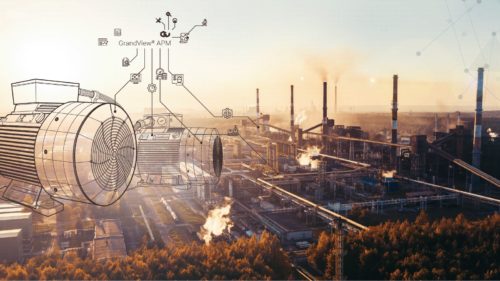The future of manufacturing production is here today
Fully exploit the potential of robotics with AI
Government-subsidized AI projects and research facilities demonstrate that artificial intelligence (AI) is more than a short-lived trend – it is a forward-looking technology. Now is the time for small and medium-sized manufacturing enterprises to realize this. AI is particularly promising when combined with collaborative industrial robots. Robotics with AI make an important contribution to profitable automation, enabling manufacturing engineers to fulfil the requirements of nearly every automation project and deliver highest levels of flexibility to customers.
In manufacturing, a lack of flexibility can be measured in millimeters. A meticulously planned production unit aligned with a robot must pause when a workpiece is not in the predicted position. The robot that grips and handles the workpiece was implemented for a specified scenario and cannot react to unexpected situations. In this case, an employee must intervene even though automation was intended to relieve the human worker. Such delays impede the production process, inhibit flexibility and result in lower creation of value. Robots have the potential to be versatile, but they need human programming to do so. They cannot guarantee error-free processes on their own, because even in factories, unpredictable variances occur regularly.
Automate with AI
工业智能应用程序s achieve success when they start with clearly defined problems that they optimize in a time- and cost-efficient manner. Robots equipped with an AI controller like MIRAI can handle variances autonomously and in real time.MIRAI enables industrial robots to handle variance in production. MIRAI-powered robots use cameras and sensors to react in real time to dynamic conditions in a workspace.
Employees can train and adapt the AI to new requirements independently, in just a few hours, without knowledge of AI. Through human demonstration and machine learning, the robot learns how to handle unfamiliar situations.

Employee trains MIRAI-controlled robot. A MIRAI-controlled robot can be trained by human hands via demonstration; neural networks then process the data obtained. Courtesy: Micropsi Industries
This allows robots to perform tasks that previously required human workers because the cost or complexity of automation was too high. All sizes of enterprises benefit from AI-assisted robot software. This type of AI can effortlessly learn new skills and retrieve them in real time. AI controllers are mostly used for the first and last decisive centimeters of a manufacturing step. The robot program manages the rest of the path. This approach delivers both flexibility and precision.
Intelligent handling at ZF Friedrichshafen
Precisely controlling the first and last centimeters was the main goal of ZF Friedrichshafen, a global technology company and the fifth-largest automobile manufacturer worldwide. ZF needed to automate the workpiece feed of a large volume milling station where gears were produced. In the work process, metal rings were removed from a crate and placed on a conveyor belt to later flow into the production of the gear wheels. The production process was highly variable, as the rings were arranged unpredictably, and the location and shape of the mesh box varied. Changing lighting conditions presented an additional challenge.

AI-based handling at ZF Friedrichshafen. With the help of MIRAI, the robot arm detects the position of a metal ring and grips it – even in variable lighting conditions. Courtesy: Micropsi Industries.
Today, ZF uses MIRAI in an automated workpiece fixture. With its own controller, the UR10e collaborative industrial robot from Universal Robots is placed into position above the rings in the crate, and then the MIRAI system takes control. MIRAI moves the robot independently to the next ring and brings the gripper into the correct three-dimensional gripping position. Once this position is reached, the UR10e system takes over again, picks up the ring and moves it to a conveyor belt for depositing. The complete setup of the robot took only a few days. Today, AI at ZF ensures permanently stable, fast production processes that react to variances. The previously unsolvable task could thus be automated quickly and cost-effectively.
AI assembly applications, fridge sniffing
组装应用程序可以自动冷杉st time with AI as well. In assembly, trolleys for the material and the pre-products have manufacturing tolerances that are acceptable to human workers but are insurmountable obstacles for robots. Specifying the material feed accurately enough for a robot to cope is costly. In contrast, with AI the automation of assembly activities is possible. The costs of robots, tooling, and AI control are manageable and can be applied selectively – there is no need to robotize the entire production.
在另一个应用程序示例中,automa的目标tion was to free personnel for more value-adding tasks. Checking for coolant leaks, called fridge sniffing, is a monotonous, error-prone activity. In this application, refrigerator manufacturers use hand-held probes to search for cooling leaks in solder joints of compressors and copper piping. When a leak goes undetected, harmful substances can escape, so this is an important safety test. To ensure that the pipes are leak-proof, a probe is brought to within a millimeter of a solder joint, which can vary in position. MIRAI provides great support: The AI control system guides the robot to the joint to detect possible leaks. In this way, the robot can perform a potentially tedious task with repeatable precision andconsistent quality.

Automated production process. The UR10e places a metal ring on a conveyor belt. Courtesy: Micropsi Industries.
Get the most out of robotics
These examples demonstrate that AI is a logical step in the evolution of automation technology. Thanks to AI, robots that falter at the smallest variances are becoming true wonder weapons in everyday industrial production. Equipped with hand-eye coordination, robotics can respond in real time to unforeseen situations. Control systems like MIRAI enable great flexibility while maintaining precision. And that is precisely what defines the intelligence in AI.
Original content can be found atPlant Engineering.
Do you have experience and expertise with the topics mentioned in this content? You should consider contributing to our CFE Media editorial team and getting the recognition you and your company deserve. Clickhereto start this process.







